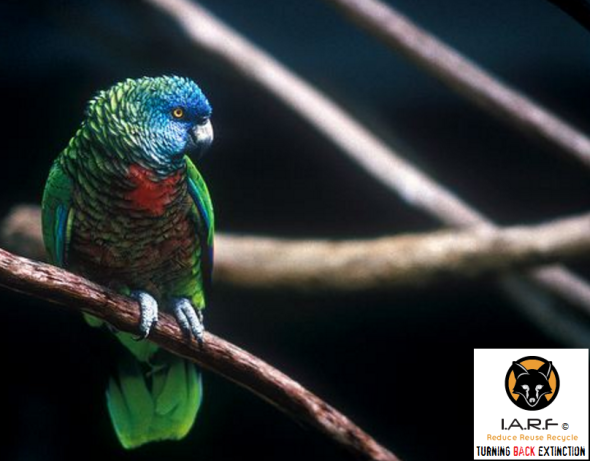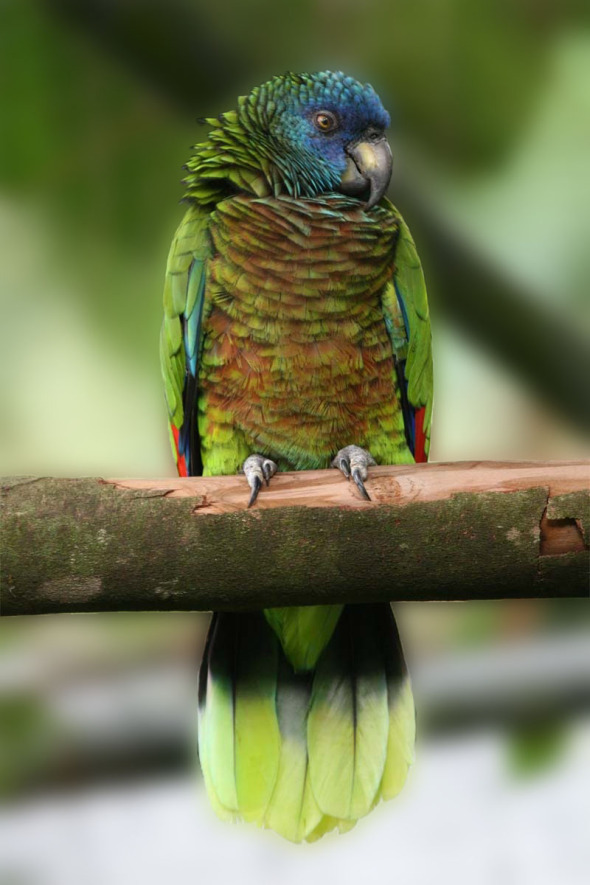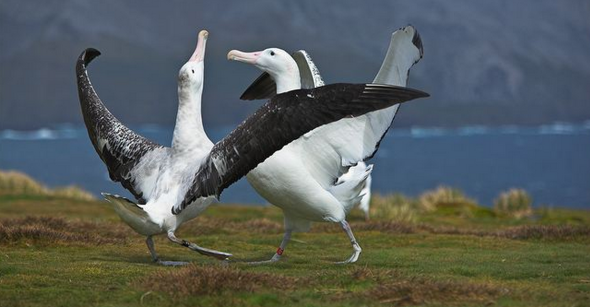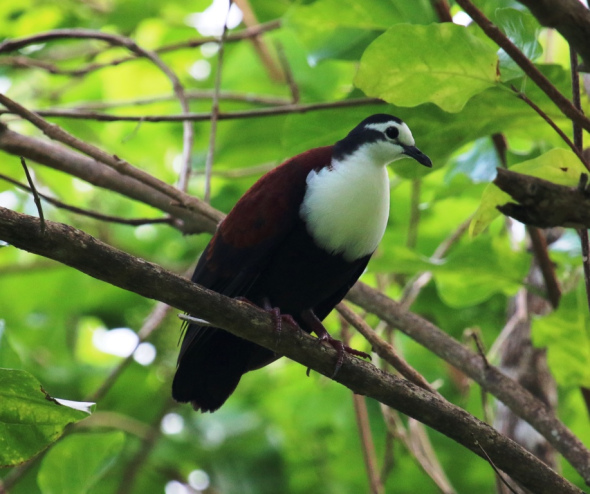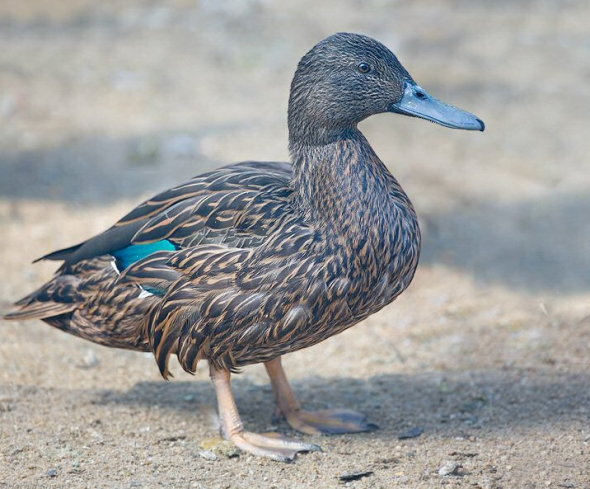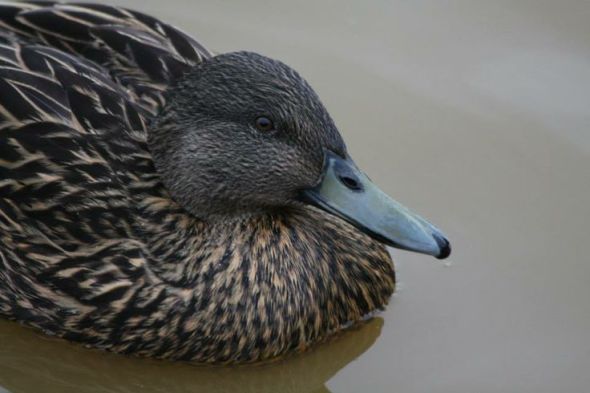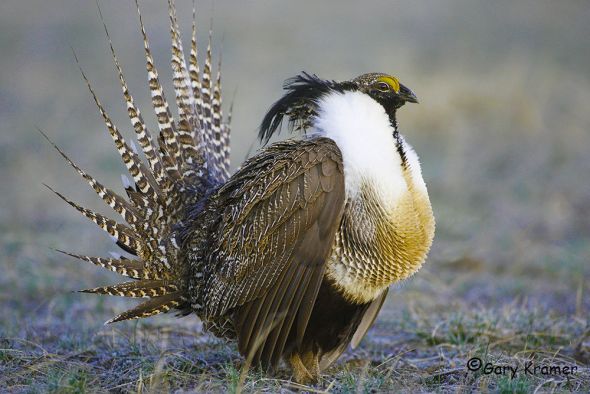CYPRUS: WELCOME TO THE SONGBIRD KILLING FIELDS.
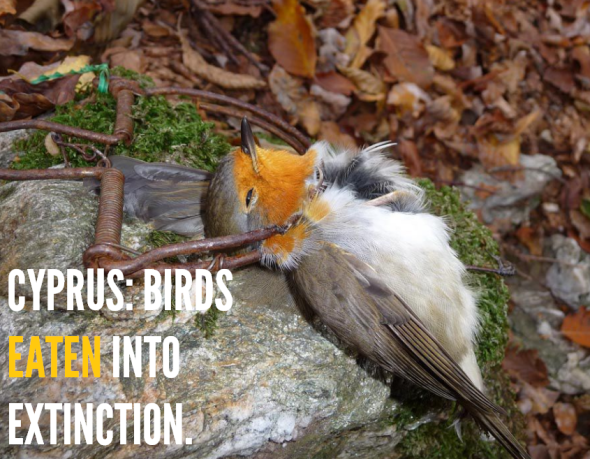
WELCOME TO THE CYPRUS KILLING FIELDS
Just over a week ago, while walking through the local woodland gardens, I noticed a little European robin that just happened to perch next to a fence no more than a few meters in front of me. I was taken aback because, this was the first robin sighting in as many years, today its actually quite rare to spot them, and while I embraced the moment, it dawned on me, why wasn’t I witnessing more of these beautiful birds within the wild?.
Robins normally head south to winter on the Continent, joining other robins passing through in the autumn on their way from Scandinavia and northern continental Europe. Interestingly, it has been shown that many migrating robins are faithful to both their summer and winter territories, which may be many hundreds of kilometers apart. Regardless of where they migrate though I myself and many other conservationist’s are seeing fewer and fewer robins and other song birds.
Every day when I awake I spend a few minutes trying to identify the number of songbirds singing within the wild within the confines of my garden. One can normally identify each individual species of bird by its unique signature melody. As a young boy it was almost difficult to identify more than a handful due to so many songbird species inhabiting the local areas. Today I can identify no more than two or three if that, and in relation to the rare sightings of robins and songbirds - this tells me only one thing - we’re losing our songbirds at an alarming rate!.
Its estimated every year that a staggering TWENTY SEVEN MILLION songbirds are slaughtered on the Mediterranean. Songbirds are unfortunately ending up on the plates of many Cypriots - to the tune of some 1.3 million, of which this number is increasing every year. Cyprus like every country hosts a wide range of traditional and culinary delights. However this culinary tradition must come to an abrupt end - very soon across the entire Mediterranean (not just Cyprus), failing this mass songbird extinctions will occur.

Image: Poached robin, (inset) ambelopoulia song bird delicacy.
Unfortunately one of them so called ‘traditional culinary delights’ is that of boiled songbirds. And please don’t for one minute think I’m singling out Cyprus here. My own country hosts a number of nauseating traditional foods that sees ducks, geese even swans butchered to provide Foie Gras and, songbirds too. Germany sells a number of robin dishes, while Malta is an even bigger offender killing hundreds of thousands of birds every year just to provide a so called “traditional food” for the locals and foreigners. Songbirds are vanishing from the Mediterranean, and the rate at which they’re being eaten is very likely to push many species into extinction in the next decade.
Cyprus has a plethora of customs due to its long history and tradition and numerous distinctive dishes for visitors to taste. The best place to do this is in one of the many traditional tavernas dotted around the island’s attractive villages, where one could order a selection of Cyprus dishes such as koupepia, souvla, kolokasi, pourgouri, seftalies and makaronia tou fournou to name just a few. For the ultimate gastronomic experience in Cyprus, the best way to try all of these and more in one sitting is as ‘mezedes’, a selection of more than 20 vegetable and meat dishes – make sure you are hungry as food will be plentiful.
However while all of these dishes may sound, look and even taste nice, a large minority of individuals on the island of Cyprus (not all), indulge in the local and traditional delicacy of boiled or grilled songbirds. Back in 1974 the government of Cyprus was lobbied and pressured to ban songbird trapping, and poaching. Today its currently still illegal to trap songbirds (as seen in the image above). While these laws prohibit anyone from illegally trapping, killing and serving up ambelopoulia - the law is very rarely enforced, which does concern us dearly. Furthermore what’s the point in having laws in place (since the 1970’s) if you’re not going to follow through with them?
AMBELOPOULIA
Mention ambelopoulia to a songbird - and it sends shivers through them, (well not literally); ambelopoulia is though the main Cyprus culinary delight - of which songbirds are pickled, roasted, grilled or boiled served with a number of vegetables or sweet fruit sauces. The traditional food normally involves boiling songbirds. The two common species of birds eaten are that of blackcaps and European robins - which is probably why I’m seeing fewer songbirds every year.
As a result almost 2,418,000 birds across the whole of Cyprus were estimated to have been killed during 2010. According to a BirdLife Cyprus report released in 2014, over 1.5 million migrating songbirds are killed annually, and the number is increasing each year. In 2015 it was estimated that over 2 million birds were killed including over 800,000 on the British Territories. Now there are new reports issued this year by various bird groups that confirm we are losing a staggering 27 million songbirds every year on the Mediterranean - many of which are killed for human delicacies.
Songbirds are trapped, killed, trafficked and consumed within many European countries. Spain, Germany, Italy, France, Belgium, Greece, Romania, Serbia, Slovenia, Russia, Malta, and of course Cyprus - all of which is mostly illegal. What makes matters even worse (in relation to Cyprus) is that a large number of songbirds are actually killed on the local British military bases on the island, so why are the Brits allowing this dare I ask?. Birdlife Cyprus stated in a report this year: “Over 800,000 birds were trapped and killed illegally on a British military base in Cyprus last autumn, according to the latest research by the RSPB and BirdLife Cyprus”.
Organised crime gangs are running this illegal practice on an ‘industrial scale’, which is estimated by the Cypriot authorities to earn criminals on the island 15 million Euros every year. Survey data from BirdLife Cyprus and other organisations have recorded over 150 species of bird which have become trapped in mist nets or on lime-sticks (pictured below). More than half of these species are of conservation concern. On a positive note, the results from 2015 show that there’s been a stop to the ‘annual increases’ of the last five years in numbers of birds killed on British Territory, thanks to various measures taken to tackle the problem by the Base authorities. The numbers however remain around record-breaking levels, with levels of illegal killing still far worse on British Territory than in the Republic of Cyprus.
The trappers defend their activity by citing the practice as traditional Cypriot food gathering and claiming that this has been an important source of protein for the natives for many thousands of years, even though the practice has been illegal since 1974. BirdLife Cyprus has identified restaurants as the main culprits as they provide the financial incentives. The enthusiasm Cypriots and many other visitors to the island have for this delicacy despite its illegality has resulted in the development of a very profitable industry.
Poaching for ambelopoulia has been on the rise in recent years, involving by 2011 a “mafia-like operation” that include poachers, dealers, exporters, and restaurant operators that participate in the illegal business estimated to be worth about 5 million euro at that time (2011). The birds reportedly sell for five euros each and it is estimated by Cypriot authorities to have earned criminals on the island 15 million euro in 2015.
LIME STICKS
Cypriot poachers illegally poach songbirds using a number of methods. One of them (seen pictured below) are lime sticks. The use of lime sticks is ‘strictly illegal’, however as explained above, despite laws in place on the island local authorities still turn a blind eye.
Lime sticks are a simple but particularly cruel and indiscriminate method of trapping birds. ‘Twigs’ are covered with a sticky ‘lime’ or ‘glue’ (in Cyprus trappers traditionally used a concentrate made from boiled Syrian plums) and are placed wherever birds can be tempted to perch. This could be in natural vegetation like bushes or trees, or sometimes lime sticks are pushed into the ends of bamboo poles. And as you guessed - once the bird lands on the lime stick they are stuck fast.
The more the bird struggles, the more it becomes entangled within the sticky like natural/unnatural substance. Songbirds die a horrific death, struggling for hours before being crushed to death by poachers, or dying of extreme exhaustion and stress. Just in one area (such as local gardens alone), its estimated that ‘hundreds of lime sticks are set up to catch as many birds as possible’. More than TWO MILLION songbirds are illegally poached using this method of trapping - which is cruel, painful, and totally barbaric.
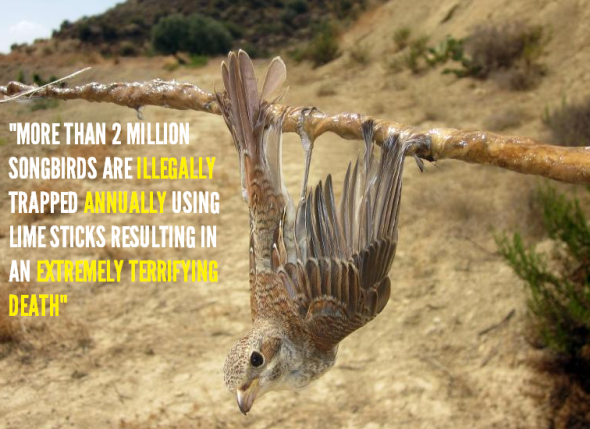
Image: Lanius collurio (Red Backed Shrike) trapped using a lime stick.
In Cyprus alone its “estimated that some one million songbirds are caught using this method of illegal trapping. Most of the sticks are set up within residents gardens - which makes policing even more difficult. One must also think - how is it even possible for every single home within Cyprus to be monitored by the local authorities?.
Lime sticks are so effective because when a bird lands its legs bend causing two flexor tendons to tighten which ‘lock’ the toes around a perch. This involuntary reflex (designed to stop perched birds falling while they sleep) means that the bird in effect presses down hard into the ‘lime’ as soon as it makes contact with it. Birds become stuck immediately. As they flutter to free themselves their wings, head, and even beak will often become stuck too.
“TRAPPERS RIP THE BIRDS FROM THE LIME STICK AND CRUSH THEM TO DEATH”
Birds caught on lime sticks are unable to get free and hang helplessly – often for hours – until the trapper comes and literally rips them off the stick and crushes them to death.
Article 9 of the European Birds Directive (2009/147/EC, formerly 79/409/EEC), states that trapping methods that are non-selective or are used for large-scale capture or killing of birds are prohibited in European Member States. This includes lime sticks, and their manufacture, sale, ownership, and use is therefore illegal across the EU. Unfortunately while this horrific method of trapping may indeed be illegal - poachers are still getting away with murder.
MIST NETS
I’ve spent a number of years living on the small island of Malta (on and off) and, a number of years trying to destroy these bloody nets with the help of many local and overseas activists. Mist nets are just as cruel and barbaric as lime sticks, although I must state that birds are caught instantly, and killed there and then - nevertheless their deaths are still horrific.
Mist nets are often use by poachers on the island of Cyprus to catch a larger number of birds, meanwhile these very same poachers will also have lime sticks deployed within key areas. So it kind if gives you a little more insight into just how greedy poachers and buyers have become. Furthermore the rate at which we’re losing songbirds - and the levels of poaching increasing, what’s next when extinction finally does occur. Mist nets are also used within Spain, France, Romania, and Germany (among many other EU countries).
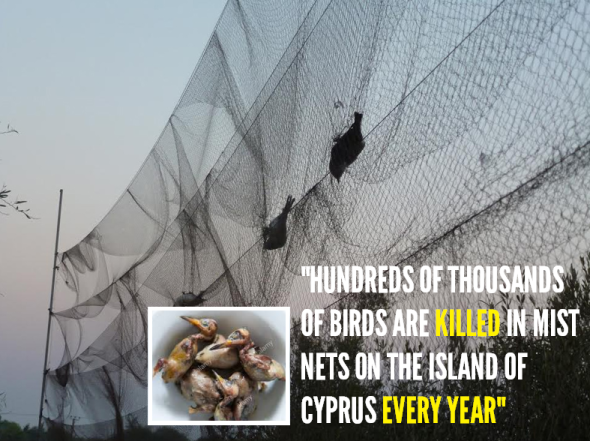
Image: Mist nest. Inset is the local delicacy of Cyprus.
Its estimated (just in Cyprus alone), hundreds of thousands of birds are caught and brutally slaughtered within mist nets every year, and with over a million more using lime sticks - and with laws rarely enforced on the island of Cyprus, will we be seeing a colossal extinction soon of migrating songbirds? I hate to say this, but unless laws are enforced and action is taken against poachers on a larger scale - extinctions will occur.
International Animal Rescue Foundation France has thus far located a total of 139 restaurants on the island of Cyprus, of which we have uncovered out of them 139 some 24 which are selling illegally ambelopoulia. I.A.R.F.F believe that the number of restaurants illegally trading ambelopoulia is much greater than 24. Furthermore due to the dish being so popular and craved after, its highly likely that the ‘majority’ of restaurants are trading ambelopoulia. International Animal Rescue Foundation France are calling on all tourists to please BOYCOTT all Cyprus restaurants that are trading openly this vile and cruel so called delicacy.
The birds sell for approximately CY2.00. One tourist stated: “Consumers are encouraged to swallow the bird whole”. On a plate you’re normally served in between four to five songbirds, and a number of other dishes too. If you are a tourist please, please do not indulge in this delicacy, and report the restaurant immediately to the local police. Another tourist that visited the area of Laxia, stated: “Laxia is somewhat of a favorite with the police, mayor and local mafia. So if there’s anything illegal going on you’ll probably find it there”. From what we are aware locals don’t encourage you to swallow the dead boiled bird[s] whole, however it wouldn’t be somewhat of a shock if this was factual.
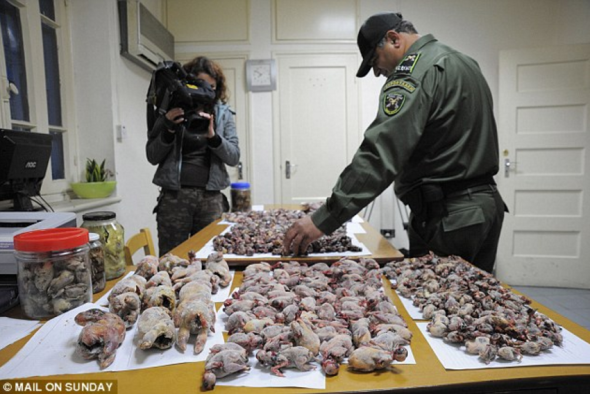
Image: Poached songbirds confiscated from poachers on the UK armed forces base.
“WHY ARE SONG BIRDS IMPORTANT?”
Songbirds are an incredibly important species of bird consisting of over 159 separate species that are endemic mostly to Europe, and as far away as Asia, America, Canada and Africa. While eating them may seem “important or traditional”, scientifically speaking you’re actually harming the environment, and removing yet another food chain link that many other species of animals depend on.
For management purposes, songbirds are part of a group called “land birds,” species that rely mainly on terrestrial habitats and some vegetated wetlands. Songbirds eat a wide variety of foods, including insects, seeds, berries, nectar, and fruit. If we lose our songbirds there will be a dramatic increase of insects, and an alarming decrease in foods that we humans also require.
Furthermore we and other animals need songbirds to continue the spread of plant, fruit and vegetable seeds to ensure that we and animals don’t go hungry. The same applies to fruit trees and bushes too. Many songbirds pollinate fruit trees and bushes - of which them plants and trees provides humans and animals fruits and berries. Finally as explained above - many songbirds are also a vital bird crop pollinator - should extinction occur, then we’ve lost a massive pollinating species that we humans and animals rely on. Are you ready to pollinate crops by hand, or prepared to pay higher prices for fruit and vegetables?
Reptiles, snakes, lizards, and even marine species such as sharks eat songbirds which are part of their diet. No songbirds means a drastic decline of food prey for reptiles, snakes, lizards, marine and amphibious species. So while you may not think songbirds are important - they truly are. Because the trapping methods are non-selective, 150+ species are known to have been caught in the traps. More than a third (58 species) of these are species of conservation concern, including the lesser kestrel, which is vulnerable to global extinction.
Extinction here is really not an option and, we must do more to preserve and secure our songbirds habitat and them too. There are many links and a handful of videos within this article, plus many alarming facts. Please share, and please help us and many other groups defend Mother Natures songbirds. If you see a trap or mist net, please report it. If you can destroy them traps without harm coming to yourself, then please do so. You can even call on us and other groups to destroy these illegal traps too.
“EXTINCTION IS NOT AN OPTION”
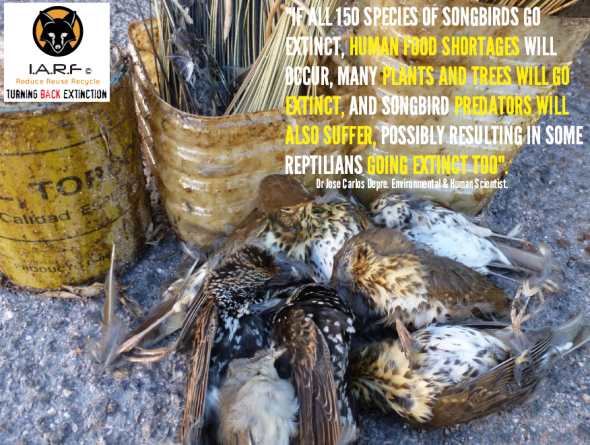
Thank you for reading.
Dr Jose Carlos Depre.
Environmental, Botanical & Human Scientist
PhD. MEnvSc. BSc(Hons) Botany, PhD(NeuroSci) D.V.M.
Endangered Species Friday: Amazona versicolor
Endangered Species Friday: Amazona versicolor
This Fridays Endangered Species Post (ESP) I touch up briefly on the St Lucia Amazon as the species is commonly known. Image credits Philippe Feldman
The species was identified back in 1776 by Dr Philipp Ludwig Statius Müller (April 25, 1725 – January 5, 1776) who was a German zoologist. Dr Statius Müller was born in Esens, and was a professor of natural science at Erlangen. Between 1773 and 1776, he published a German translation of Linnaeus’s Natursystem.
The supplement in 1776 contained the first scientific classification for a number of species, including the dugong, guanaco, potto, tricolored heron, umbrella cockatoo, red-vented cockatoo, and the enigmatic hoatzin.
Dr Muller was also an entomologist. Müller died in Erlangen. He is not to be confused with Salomon Müller (1804–1864), also an ornithologist, or with Otto Friedrich Müller. Note that the family name is actually spelled without the umlaut, then and now.
The Saint Lucia Amazon is listed as (vulnerable) which was nearing (endangered), native to Saint Lucia. From 1988 the species was first listed as (near threatened), however, unfortunately from 1994-2016 the species was re-listed as (vulnerable). Locals commonly refer to the species as the; Saint Lucia Amazon, or the Saint Lucia Parrot.
Populations are considered to be extremely low, although now allegedly increasing. A decade ago the then current known population rate stood at some 350-500 individuals, this generally equates to some 230-330 ‘mature individuals’. This number was actually considered quite low for any species which technically should see the St Lucia listed as (critically endangered).
St Lucia Amazon Parrot is situated on the island of St Lucia in the eastern Caribbean where it is known locally as ‘Jacquot’. The Government of the island became aware of the plight of its endemic parrot population in 1975 when Durrell first became involved with St Lucia, and the Trust was asked to help by starting a captive breeding programme for the species at its Jersey headquarters. In 1989 a pair of captive-bred parrots returned to their native home with the Prime Minister of St Lucia.
The St Lucia Amazon’s natural habitat is subtropical or tropical moist montane forest, diet consists of fruit and insects, of which clutch size is around 3-4 eggs. The species is threatened by habitat loss. St Lucia Amazon species have declined from around 1000 birds in the 1950s to 150 birds in the late 1970s. At that point a conservation program began to save the species, which galvanized popular support to save the species, and by 1990 the species had increased to 350 birds.
Although the population in Saint Lucia is small it is still expanding. To date after conservation efforts increased on the island of St Lucia due to destructive storms and hurricanes populations were increased to some 2,100 mature individuals. Please see video below.
The story of this birds salvation from the brink of extinction (including the influence of conservationist Paul Butler) is told in Chapter 7 of the 2010 book “Switch: How to Change Things When Change is Hard” by Chip & Dan Heath.
Listed on Cites Appendix I and II, below I’ve included a list of identified threats associated with the St Lucia Amazon Parrot.
MAJOR THREATS
The human population of St Lucia is growing at a considerable rate, increasing pressure on the forest and resulting in habitat loss. Selective logging of mature trees may significantly reduce breeding sites, and hurricanes, hunting and trade pose further threats. There have been recent efforts to lift the moratorium on hunting within forest reserves, which would seriously threaten this species.
Image: St Lucia Amazon
Its truly wonderful to know that conservation efforts have brought this species back from the brink of near extinction. The Durrell Wildlife Conservation Trust is one trust that I admire, and have donated many hundreds of euros to since I was a teenager. Durrell have worked wonders across the globe working to help primates, frogs and countless birds, not forgetting many other animals..
The Durrell Wildlife Conservation Trust is one NGO that I myself will be leaving money to in my will. Why? Because they deserve the money for the work they put into preserving our flora and fauna. You can donate to the Durrell Wildlife Conservation Trust here: https://www.durrell.org/wildlife/shop/donation/
Thank you for reading and have a nice day.
Dr Jose C. Depre PhD. MEnvSc. BSc(Hons) Botany, PhD(NeuroSci) D.V.M.
Chief Environmental and Botanical Scientist.
Follow me on Twitter here: https://twitter.com/josedepre11
Facebook: https://www.facebook.com/InternationalAnimalRescueFoundationAfrica/?fref=ts
Endangered Species Friday: Diomedea amsterdamensis - An Ocean of Grief.
Endangered Species Friday: Diomedea amsterdamensis
This Friday’s (ESP) Endangered Species watch Post I dedicate to one of the most stunning and adorable of all plane like birds. Listed as [critically endangered] and identified back in 1983 by South African Dr Jean Paul Roux whom is a Marine Biologist studying Zoology, Systems Biology and Marine Biology at the University of Cape Town, South Africa Jean Paul Roux works full-time at the Department of Biological Sciences, Cape Town. (Image D. amsterdamensis fledglings)
(Image: Birdingblogs.com)
Commonly identified as the Amsterdam Albatross or Amsterdam Island Albatross the species was listed as [critically endangered] back in 2012. This gorgeous bird is endemic to the French Southern Territories of which its populations are continuing to decline at a rapid pace. Populations were estimated at a mere 170 individuals which in turn ranks as the worlds most endangered species of bird. Out of the 170 individuals there are a total of 80 mature individuals consisting of 26 pairs that breed annually.
Between 2001-2007 there were a total of 24-31 breeding pairs annually, which leaves a slightly lower population count today of around 100 mature individuals. Back in 1998 scientists stated that there were no fewer than 50 mature individuals if that. The Amsterdam Albatross doesn’t naturally have a small population however qualified for the category of [critically endangered] due to this reason when identified in 1983. Furthermore pollution, habitat destruction and disease remain pivotal factors that’s decreasing populations furthermore. The video below from MidWay island explains a little more about pollution and birds of this caliber.
Its quite possible that there could be more unidentified groups within the local territory or elsewhere, unfortunately as yet there is no evidence to suggest the Amsterdam Albatross is located anywhere else, however there have been sightings, which do not necessarily count as the species being endemic to countries the bird may have been noted within.
The species breeds on the Plateau des Tourbières on Amsterdam Island (French Southern Territories) in the southern Indian Ocean. An increase of populations was documented via census back in 1984, a year after identification. Marine Biologists have stated that population sizes may have been more larger when its range was more extensive over the slopes of the island.
Meanwhile in South Africa satellite tracking data has indicated the Amsterdam Albatross ranges off the coast of Eastern South Africa to the South of Western Australia in non-breeding pairs. There have been some [possible] sightings over Australia through to New Zealand too. Meanwhile South Africa “may” have its first breeding pair this must not be taken as factual though. Back in 2013 a nature photographer photographed an Amsterdam Albatross off the Western Cape of South Africa which is the very first documented and confirmed sighting [2013].
AN OCEAN OF GRIEF
Breeding is biennial (when successful) and is restricted to the central plateau of the island at 500-600 m, where only one breeding group is known. Pair-bonds are lifelong, and breeding begins in February. Most eggs are laid from late February to March, and chicks fledge in January to February the following year.
Immature birds begin to return to breeding colonies between four and seven years after fledging but do not begin to breed until they are nine years of age. The Amsterdam Albatross exact diet is unknown, but probably consists of fish, squid and crustaceans. During the breeding season, birds forage both around Amsterdam Island and up to 2,200 km away in subtropical waters which is something of interest. During the great Sardine Run many aquatic species consisting of birds, seals, sharks and whales hit the South African oceans hard for sardines. So I am calling on my fellow South African friends to please be on the lookout for this rather elusive bird.
Read more here on the Avian Biology.
Image: Amsterdam Albatross mating ritual, credited to Andrew Rouse.
Diomedea amsterdamensis, is quite a large albatross. When described in 1983, the species was thought by some researchers to be a sub-species of the wandering albatross, D. exulans. Bird Life International and the IOC recognize it as a species, James Clements does not, and the SACC has a proposal on the table to split the species. Please refer to the link above on Avian Biology which will explain more on the bird and its current classification.
More recently, mitchondrial DNA comparisons between the Amsterdam albatross, the wandering albatross Diomedea exulans, the Antipodean albatross D. antipodensis and the Tristan albatross D. dabbenena, provide clear genetic evidence that the Amsterdam albatross is a separate species.
Threats
Degradation of breeding sites by introduced cattle has decreased the species’s range and population across the island. Human disturbance is presumably also to blame. Introduced predators are a major threat, particularly feral cats. Interactions with longline fisheries around the island in the 1970s and early 1980s could also have contributed to a decline in the population.
Today the population is threatened primarily by the potential spread of diseases (avian cholera and Erysipelothrix rhusiopathiae) that affect the Indian Yellow-nosed Albatross Thalassarche carteri population 3 km from the colony. Infection risks are very high and increased chick mortality over recent years suggests the population is already affected.
The foraging range of the species overlaps with longline fishing operations targeting tropical tuna species, so bycatch may also still be a threat, and a recent analysis has suggested that bycatch levels exceeding six individuals per year would be enough to cause a potentially irreversible population decline. Having a distribution on relatively low-lying islands, this species is potentially susceptible to climate change through sea-level rise and shifts in suitable climatic conditions. Plastic pollution has also been noted as problematic.
International Animal Rescue Foundation Africa and International Animal Rescue Foundation France are currently working on projects to reduce more plastic within bird habitat that has never been visited by the organisation before. The current plight of bird habitat and plastic pollution within the Pacific ocean needs to be worked on by everyone, furthermore addressed immediately.
To date all twenty two species within the four genera of Albatross are heavily threatened with extinction. There remains no species at present that is listed as [least concern]. The future is indeed very bleak for all 22 species and something we now need to work on and towards to preserve Albatross’s before extinction occurs within a decade for the vast majority of all twenty two species and sub-species.
Thank you for reading.
Please share to make aware the plight of this stunning bird and the remaining twenty two species too.
Dr Jose C. Depre.
Botanical and Environmental Scientist.
A planet without birds is a world not worth living within anymore. Daily I am traumatized and deeply disturbed at viewing the destruction we have caused to these stunning animals and, their natural habitat. I am pained, deeply frustrated and infuriated at international retail companies whom preach good yet practice negligence killing off via plastic pollution our species of birds. Jose Depre
Endangered Species Friday: Anas melleri.
Endangered Species Friday: Anas melleri
This Fridays Endangered Species watch Post (ESP) focuses on a very undocumented bird known scientifically as Anas melleri and commonly known as the Meller’s Duck.
The Meller’s Duck was identified back in 1865 by lawyer and Doctor Philip Lutley Sclater FRS FRGS FZS FLS (4 November 1829 – 27 June 1913) was an English lawyer and zoologist. In zoology, he was an expert ornithologist, and identified the main zoogeographic regions of the world. He was Secretary of the Zoological Society of London for 42 years, from 1860–1902.
Listed as endangered, populations are on the decline quite extensively throughout the birds entire range. A. melleri qualified for (endangered status) back in 2012. Endemic to Madagascar the species can be located on the eastern and northern high plateau. Populations are isolated on massifs on the western edges of the plateau. Documented reports from the west of the island most probably refer to vagrant or most likely wandering birds.
Its been alleged that at some time from 2012 re-introduced populations on the island of Mauritius are now extinct - however there remains no hard hitting evidence to back this claim up, conservationists have stated that a ‘probable extinction’ occurred on the island.
The Meller’s Duck was once described as common on the Africans island of Madagascar, unfortunately there is no evidence to back this claim up either. Conservationists that visit the island regularly from International Animal Rescue Foundation Africa and have documented on the Meller’s Duck previously have been informed by locals that the species is rarely seen, however huntsmen will peddle the meat of ducks into local villages.
International Animal Rescue Foundation Africa stated the species had been documented by explorers as ‘densely populated’ on the island from the 1500’s to 1800’s. Sadly since human colonization increased on the island after the French protectorate from the mid 1800’s human population growth on the island has attributed to current decline of the species. Over the last twenty years human population has skyrocketed significantly which unfortunately has led to vast swathes of habitat destroyed and illegal poaching to occur.
“All birds seem to be within a single subpopulation which is probably continuing to decline rapidly. Extinctions are likely to occur in under a few years, five years max”…
Conservation teams like the local communities have confirmed that the species is sadly no longer common ‘anywhere’ other than forested areas of the northwest and in the wetlands around Lake Alaotra where there are some breeding pairs, but where many non-breeders collect, with up to 500 birds present. All birds seem to be within a single subpopulation which is probably continuing to decline rapidly. Extinctions are likely to occur in under a few years, five years max!.
Population sizes are incredibly depressed. We now know the species numbers at 2,000 to 5,000 individuals which equates to exactly 1,300 to 3,300 mature individuals. Should pet collection, poaching, habitat destruction Etc continue at the rate it is extinctions will as explained occur in roughly (730 days). That’s how serious the problem is.
Conservation projects are underway of which the IARF have contributed funding towards the Durrell Wildlife Conservation Trust. The species occurs in at least seven protected areas, and is known from 14 Important Bird Areas (78% of eastern Malagasy wetland IBAs) (ZICOMA 1999). No regular breeding sites are known. In 2007, there was a drive to increase the number of institutions that keep the species in captivity, and as such the bird is a nationally protected species.
Conservation actions planned: Protect remaining areas of least-modified wetlands at Lake Alaotra. Conduct wide-scale status surveys of eastern wetlands. Study its ecology to identify all causes of its decline and promote development of captive breeding programmes.
(Please note all new monetary and equipment grants provided by IARFA from August of last year to present has yet to be updated into the main transparency register onsite)
Meller’s duck breeds apparently during most of the year except May–June on Madagascar, dependent on local conditions; the Mauritian population has been recorded to breed in October and November (however as explained is likely to now be extinct). Unlike most of their closer relatives—with the exception of the African black duck—they are fiercely territorial during the breeding season; furthermore, pairs remain mated until the young are.
Threats
A. melleri is still classed as the largest species of wildfowl found in Madagascar and is widely hunted and trapped for subsistence (and for sport). Interviews with hunters at Lake Alaotra suggest c.450 individuals are taken each year, constituting 18% of the global population.
Long term deforestation of the central plateau, conversion of marshes to rice-paddies and degradation of water quality in rivers and streams, as a result of deforestation and soil erosion, have probably contributed to its decline too. Widespread exotic carnivorous fishes, notably Micropterus salmoides (although this may now be extinct) and Channa spp., may threaten young and cause desertion of otherwise suitable habitat.
Its decline on Mauritius has been attributed to hunting, pollution and introduced rats and mongooses as well as possible displacement by introduced Common Mallard Anas platyrhynchos. Pairs are very territorial and susceptible to human disturbance.
Extinction is likely to occur of which continued protective captivity projects must increase for the birds future survival and re-introduction elsewhere.
The video below depicts a Meller’s Duck captivity project in Germany.
Thank you for reading.
Dr Jose C. Depre
http://www.speakupforthevoiceless.org
Please donate to SAYNOTODOGMEAT.NET < Click the link - [email protected]
Endangerd Species Monday - Centrocercus minimus
Endangered Species Monday - Centrocercus minimus
Picture credits: Gary Kramer Photography.
This Mondays endangered species article I take a glimpse into one of the planets most endangered bird species and one of the millenniums kind of newest discoveries, or more “an overlooked species should I say”.. The Centrocercus minimus, commonly known as the Gunnison Sage Grouse is the bird I am speaking about and, not the “Greater Sage Grouse”. C. minimus species is listed as (endangered) of which its populations are declining quite extensively. The species was identified back as a “new species” by Dr Mark Young et al 2000 after environmentalists believed the species to be the near threatened Greater Sage Grouse. Thankfully after much research this stunning bird and its non-similarities to the Greater Sage were finally uncovered.
Endemic only the United States population sizes are very, very sparse and limited. From census counts back in 2005 mature individuals stand at a depressing 1,700. This roughly equates to around 2,500-2,600 total individuals if that. If there is one bird within the United States that could benefit from “extreme conservation preservation” C. minimus is one out of several unrelated species requiring immediate protection status.
Conservation actions began back in 2005 of which a working group was formed to protect and oversea all conservation projects of this magnificent bird. Back in 2008 a conservation plan identified over 200 actions that required immediate addressing to stop its sudden decline into extinction. By 2005 over ninety five percent of the population was covered by working groups.
Conservation actions proposed/underway:
Restore and improve habitat, while continuing work to prevent further loss and fragmentation. Support its listing on the Endangered Species Act. Continue population monitoring at key sites. Conduct further ecological research, focusing on survival, dispersal and habitat use at different life stages. Encourage and facilitate the implementation of local and range-wide management plans. Reduce disturbance, especially at active leks. Investigate the possibility of using translocations to augment small populations. Continue work to raise awareness of key issues among stakeholders.
Image: Gunnison Male. Males fan their feathers, strut while popping air sacs in their chests. Males put this show on to attract females. Behavior becomes aggressive when females are present.
Gunnison Sage Grouse are notable for their elaborate courtship rituals. Each spring males congregate on leks and perform a “strutting display”. Groups of females observe these displays and select the most attractive males to mate with. Only a few males do most of the breeding. Males perform on leks for several hours in the early morning and evening during the spring months. Leks are generally open areas adjacent to dense sagebrush stands, and the same lek may be used by grouse for decades.
Threats
Habitat loss, degradation and fragmentation is resulting from conversion to roads, reservoirs, livestock-grazing, hay and other crops, real estate developments, power lines, land treatments and increased deer populations - hence why hunters do participate in seasonal hunting of deer to keep populations in check and from destroying Gunnison Sage Grouse’s habitat.
Many winter sites are directly threatened and being enclosed by urbanization. Severely fragmented populations have low genetic variation and the recent reintroduction of the disease West Nile virus to the species’s range is a concern. Inbreeding depression appears to be occurring due to the skewed mating system at leks: six of the seven extant populations now appear to be low enough to be suffering from this. Disturbance from scientific study and recreational birdwatchers may cause stress and reduced lek attendance and production.
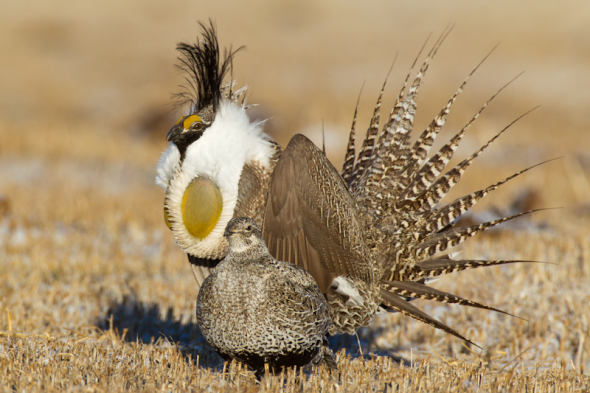
Male Gunnison Sage-Grouse displays on the lek during a spring mating season at Mill Creek Ranch in Gunnison, CO.
Severe winters and potentially droughts may represent survival bottlenecks (e.g. in 1984, less than 10% of sagebrush emerged above the snow as may other habitat factors influencing chick survival. Calls to increase gas prospecting in areas of sagebrush habitat represent a potential future threat.
Hunting has since been banned when the new species was formally identified back in 2000 and conservation actions began. G. Sage Grouse is mostly confined to Colorado with some smaller populations confined to Utah. The species has been recognized by the American Ornithological Union as one of the ten most endangered species of birds in North America. It is therefore listed as a possible candidate for future protection under the Endangered Species Act (ESA). However, while numerous groups have developed conservation plans and actions for the species; it continues to be at significant risk and lacks federal protection under the ESA.
Thank you for reading.
Dr Jose C. Depre.
Chief Environmental and Botanical Officer (CEO)

